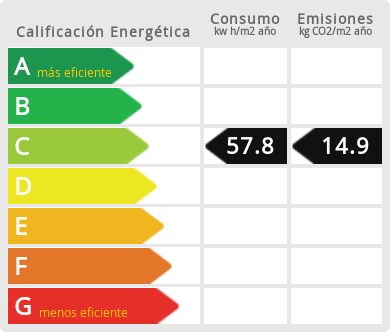Rif. 26212
House/Locale Commerciale/Altro/Caseggiato in Sant Lluis Centro
Prezzo: 980.000 €
Prezzo (prima): 1.250.000 €







- Descrizione
- Informazioni sulla zona
- Maggiori informazioni
- Invia ad un amico
Descrizione
Descrizione
The layout includes a ground floor of approximately 300m², a first floor of over 230m², and a terrace of just over 107 m², with the potential to expand by an additional 100 m². The second floor/loft covers 56 m².
Informazioni sulla zona
Informazioni sulla zona
(Posizione approssimativa)
Located in the southeast of Menorca, the district of Sant Lluís owes its name to the King of France, Louis XV. It was during a brief period of time in the 18th century, when the French dominated the island. Its legacy left us with the quiet village of white houses that today is Sant Lluís. In fact the streets and squares of the town maintain the layout established by the Count of Lannion, French governor of the island who had the responsibility of planning the layout of the town. Without doubt, the church and the Molí de Dalt are its most emblematic buildings.
Those who visit Menorca have stated that it is one of the paradises of the western Mediterranean, an island that history has always been an object of desire because of its strategic position and which now has ended up becoming one of the most attractive tourist destinations. However, it is not only a dream spot for holidays, but also for living. Menorca allows you to experience for yourself the quality of life that you had always imagined, through the combination of small details that make up its landscape, people, tranquillity, light, traditions and fine food.
Geographically, Menorca is the easternmost and northernmost island of the Balearic Islands, declared a Biosphere Reserve in 1993 by UNESCO. It has a coastline of 701 km² and 216 kilometres of, along which are distributed more than 70 beaches. Blessed with a typically Mediterranean climate with annual average temperatures of 16.5 degrees, it currently has a population of 96,000, concentrated into eight districts: Maó (administrative capital of the island), Ciutadella (the old capital), Alaior, Ferreries, Es Mercadal, Es Castell, Sant Lluís and Es Migjorn Gran. There are three other towns, Sant Climent, Llucmaçanes and Fornells, the first two in the district of Maó and the other in Es Mercadal. Maó, located in the east, and Ciutadella, in the west, are the two most inhabited towns on the island.
Socio-economically, unlike the other islands of the Balearic archipelago, Menorca has, over time, had the good fortune to be able maintain a perfect balance between the traditional industries of footwear, costume jewellery and agriculture favouring the gentle development of the tourist sector and thus enabling the island to preserve its countryside and beaches. This environmental sensitivity still exists among all its inhabitants, guaranteeing a unique setting, perfect for family, sports and cultural tourism.
